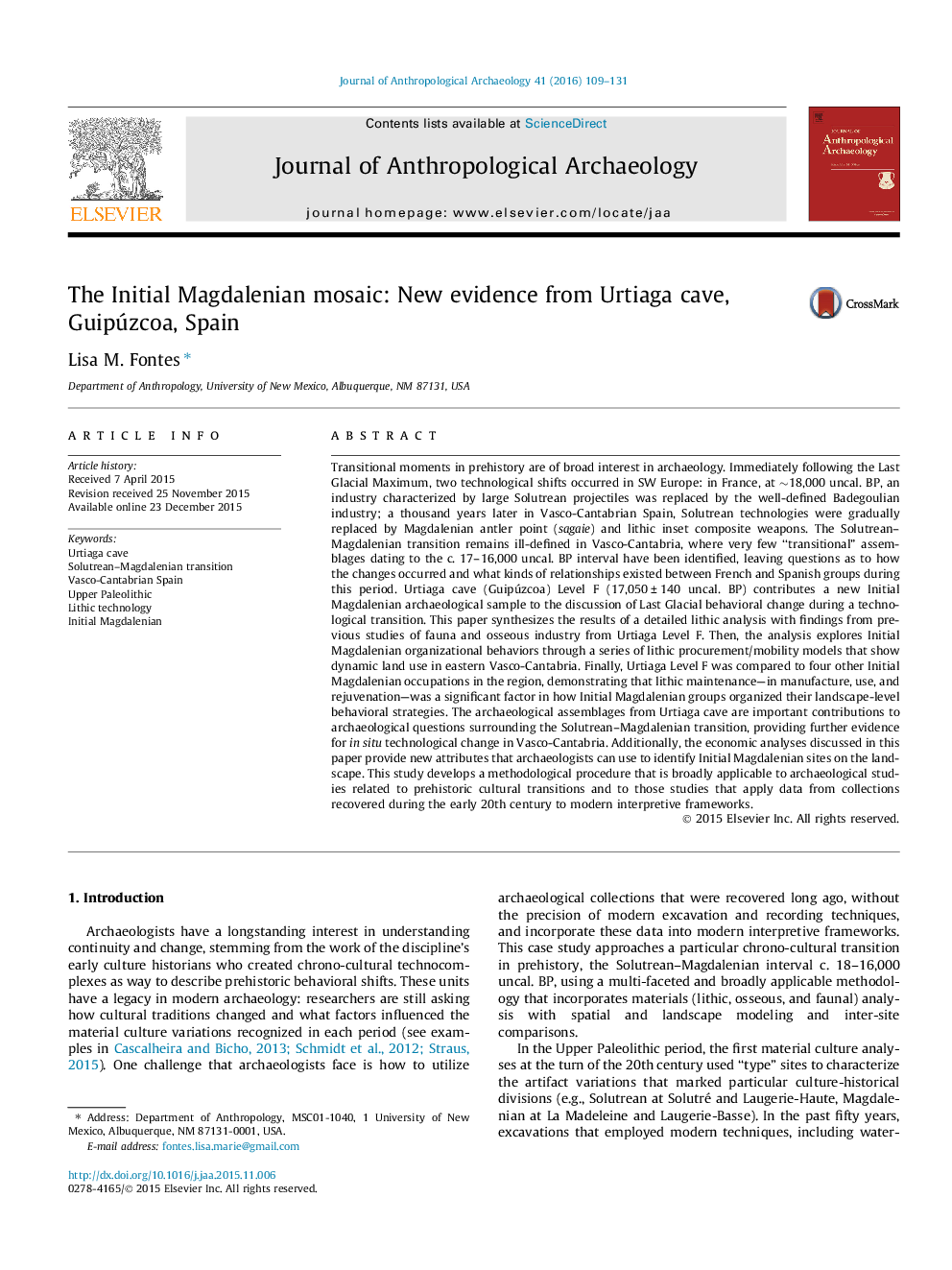| کد مقاله | کد نشریه | سال انتشار | مقاله انگلیسی | نسخه تمام متن |
|---|---|---|---|---|
| 1034876 | 1483849 | 2016 | 23 صفحه PDF | دانلود رایگان |
• Urtiaga cave is compared to four sites in Vasco-Cantabria occupied c. 17,000 years BP.
• Initial Magdalenian groups were highly mobile.
• Maintenance was an important aspect of regional Initial Magdalenian technology.
• The Vasco-Cantabrian Initial Magdalenian developed in situ.
Transitional moments in prehistory are of broad interest in archaeology. Immediately following the Last Glacial Maximum, two technological shifts occurred in SW Europe: in France, at ∼18,000 uncal. BP, an industry characterized by large Solutrean projectiles was replaced by the well-defined Badegoulian industry; a thousand years later in Vasco-Cantabrian Spain, Solutrean technologies were gradually replaced by Magdalenian antler point (sagaie) and lithic inset composite weapons. The Solutrean–Magdalenian transition remains ill-defined in Vasco-Cantabria, where very few “transitional” assemblages dating to the c. 17–16,000 uncal. BP interval have been identified, leaving questions as to how the changes occurred and what kinds of relationships existed between French and Spanish groups during this period. Urtiaga cave (Guipúzcoa) Level F (17,050 ± 140 uncal. BP) contributes a new Initial Magdalenian archaeological sample to the discussion of Last Glacial behavioral change during a technological transition. This paper synthesizes the results of a detailed lithic analysis with findings from previous studies of fauna and osseous industry from Urtiaga Level F. Then, the analysis explores Initial Magdalenian organizational behaviors through a series of lithic procurement/mobility models that show dynamic land use in eastern Vasco-Cantabria. Finally, Urtiaga Level F was compared to four other Initial Magdalenian occupations in the region, demonstrating that lithic maintenance—in manufacture, use, and rejuvenation—was a significant factor in how Initial Magdalenian groups organized their landscape-level behavioral strategies. The archaeological assemblages from Urtiaga cave are important contributions to archaeological questions surrounding the Solutrean–Magdalenian transition, providing further evidence for in situ technological change in Vasco-Cantabria. Additionally, the economic analyses discussed in this paper provide new attributes that archaeologists can use to identify Initial Magdalenian sites on the landscape. This study develops a methodological procedure that is broadly applicable to archaeological studies related to prehistoric cultural transitions and to those studies that apply data from collections recovered during the early 20th century to modern interpretive frameworks.
Journal: Journal of Anthropological Archaeology - Volume 41, March 2016, Pages 109–131
